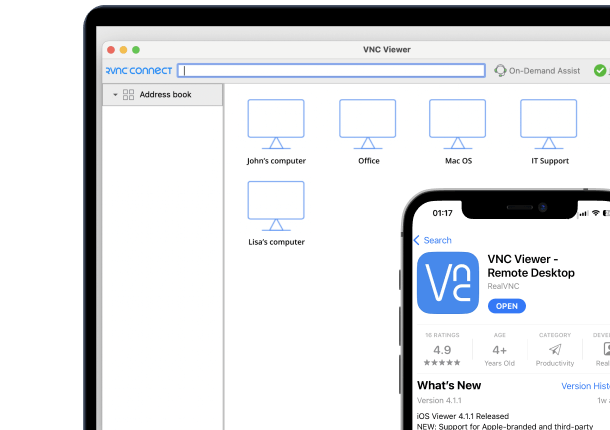Despite telecommuting becoming much more widespread than it’s ever been before, the concept has suffered from a number of stigmas and misconceptions on the part of both employers and employees which have been hard to debunk.
Some of them still persist, but the benefits of implementing agile working policies have become increasingly clear for organizations, while employees have gained a much better idea of what remote working means.
In this blog, we’re going to address some common telecommuting myths, shedding some light on the reality of remote working.
More and more companies are implementing flexible working policies that allow some, if not all, employees to work from home to reduce health risks in the ongoing pandemic. This higher degree of flexibility brings clear business benefits and makes it easier for organizations to attract capable, highly skilled individuals from a much wider pool of candidates.
When it comes to remote working arrangements, there isn’t a one-size-fits-all approach. Some businesses offer telecommuting benefits only to some departments, or to workers who have successfully established themselves as trustworthy over time.
There are companies offering semi-flexible positions that allow staff to work from home one or two days per week, and others that leave it to the employees to decide where they work. Some organizations don’t even have a common office and operate 100% remotely.
The degree of flexibility you decide to offer your employees largely depends on the requirements of your team and your organization. Whatever the approach, we’ll help you challenge some of the stereotypes you’ll inevitably end up facing if you’re looking to make remote working a reality.
Myth: remote workers are disengaged
Look, we’re not saying that every single remote worker is as engaged as their office-based peers: some people’s performance may suffer when working from an environment that isn’t as dynamic and inclusive as the average office.
However, this is often simply not the case. To start with, you’ll find that some employees naturally thrive when they are offered the higher degree of independence typical of remote working arrangements, especially without the challenges presented by shelter-in-place orders.
In order to establish whether someone falls under this category and will be able to remain productive and engaged while working remotely, a gradual transition to telecommuting used to be common practice, starting with a couple of days per month and discussing their experience throughout the process.
It’s also been relatively common practice to offer remote working privileges to employees who have been around long enough to prove themselves trustworthy, engaged, and an overall good cultural fit.
Now that remote working has become a must out of necessity, it’s important that you do what you can to make sure your remote workers remain “switched on”. There are plenty of ways you can help them feel like an important and connected part of the team, from providing them with ongoing training and career development opportunities, to organizing get-togethers where they can bond and catch up with their colleagues. This Forbes article has some useful tips on the subject.
Reality: effective communication can take some extra effort
If you want to manage a remote team effectively, you need to be able to make up for the lack of co-presence by keeping on top of communications with them. Technology will be your friend: there are many tools out there that can help you keep your communication channels open, from teleconference services, to remote access software (like VNC Connect), to team messaging apps like Slack.
It’s very important that you schedule regular catch-ups with your employees and set clear goals and expectations to make sure that they are as productive and successful working remotely as they would be working in the office (and to get to know them better!)
Myth: remote workers are lazy
Think about a remote worker: if you’re picturing a young employee lounging on their sofa in sweatpants and a hoodie, with an oversized cup of coffee in one hand and Netflix in the background, you are truly missing the mark.
On the contrary, (successful) remote working requires a high degree of discipline. Assuming that clear and reasonable goals have been defined at the start of the process, remote workers will be judged on their output and can lose their remote working privileges if their performance declines.
On this note, having an organized home workstation, ideally in a separate room whenever possible, is a must for remote productivity.
Setting up a dedicated workspace will help create a mindset that clearly separates “work mode” and “home mode”, so there isn’t overlap between the two. For the same reason, home workers should start the day by changing into work attire to get into the right frame of mind.
Reality: telecommuting takes discipline
While remote working used to generally be considered a perk, it isn’t a privilege that suits everyone, or that everyone wants. This is because remote workers need to be disciplined self-starters who are able to work on their own initiative, and who are ambitious and organized enough to keep up high-performance standards without much direction.
There isn’t only one way to get motivated: some people are more naturally capable of motivating themselves, while others perform best when working among other people, and rely on being able to drop by their boss’ desk for a quick conversation or a word of advice.
Workers from both categories can be outstanding employees—they’ll just need to be provided with the right opportunities to thrive when going back to the office will become possible.
Myth: remote workers are not team players
Working remotely doesn’t mean not caring for the team, nor does it mean that a person doesn’t enjoy the company of others. Remote workers can be as committed as office-based team members; we could argue that they actually have to be if they want to be successful.
The proliferation of virtual communication tools enables remote teams to stay connected and collaborate on an ongoing, productive basis, regardless of where the members are located.
Plus, there can be a variety of reasons behind an employee’s choice of working remotely that have nothing to do with human interaction: they may do so because they find the office environment distracting, to accommodate a disability or special needs, or even because they are more productive during non-standard office hours, such as late in the evening.
Reality: some people are more productive away from home
Remote working privileges are normally a sign that the employer trusts someone enough to know that they are capable of maintaining a high-performance standard even when their boss is not looking over their shoulder. Pretty flattering, huh?
Some employees crave autonomy and independence, and they are most productive when they can dictate their own schedule and work away from standard office distractions, especially if being in the office involves sitting in a noisy open-space environment.
If a desire for more independence comes with low social needs (which are, again, not synonymous with a “lack of team spirit”), and a natural preference for quiet spaces, a remote working arrangement might be in some cases be the one option that enables these staff members to maximize their productivity.
Myth: remote working is not secure
Organizations who have not yet implemented flexible working report that security concerns are the biggest obstacle to its adoption. These concerns, however, are often unfounded, as technology advancements can now ensure a high level of security.
A competent IT team can source and set up reputable software solutions, such as remote access or a VPN, which allow employees to safely access company data from anywhere.
Additionally, educating staff on security best practices, such as setting up strong passwords and enabling multi-factor authentication can go a long way to keep sensitive data secure.
After all, humans are the weakest link in cybersecurity, and people’s poor security habits are a much bigger issue than location when it comes to data breaches.
Reality: remote working is cost-effective (but it needs some careful planning)
We’re not denying that rolling out a remote working policy for the first time often comes with (sometimes significant) initial costs, including the purchase and deployment of new software and the hardware needed to support remote employees. Overall, however, companies end up saving money in the long run.
Overhead costs can decrease considerably, especially in terms of real estate and office space. In addition to a lower rent, organizations save on regular office expenses such as stationery, furniture, and refreshments.
Recruitment-wise, you’ll be able to hire from a much wider pool of candidates that is no longer location-dependent, and we guarantee that adding remote working to the list of benefits offered by your company will make it easier to attract talent and keep your employees happy, which is going to improve your staff retention rates. All in all, not a bad deal!
Myths and stereotypes aren’t easy to overcome, but we hope we managed to debunk some misconceptions about remote working. Speaking from experience, we’ve embraced this new working practice and deployed it gradually over the last couple of years, and we’re definitely seeing the benefits.
Unless the nature of your industry requires that your employees be physically present in a specific location, such as a warehouse or a restaurant, we can’t think of many reasons why you shouldn’t consider embracing remote working. Your employees (and your budget sheet) will thank you for that.
Remote access software: free trial
Do you need a secure and affordable remote access software to support your remote working needs? Try VNC Connect for free below.





